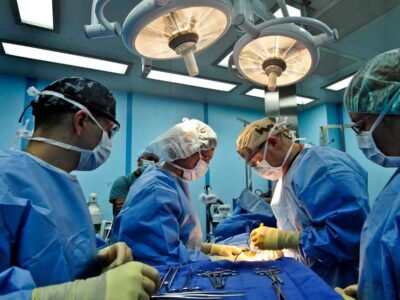The digital revolution in medicine is in full swing – with almost unlimited technical possibilities. But augmented reality, the Internet of Things, artificial intelligence and the like are not available for free. The question is: Are we ready for Hospital 4.0?
The good news first: Technically speaking, there are numerous possibilities for improving healthcare. However, the general conditions in the healthcare system make it difficult to translate them into concrete applications that benefit patients. 4besnews The most frequently cited obstacles include a lack of infrastructure, complicated approval procedures, inadequate reimbursement schemes and high regulatory requirements. There can be no progress without modern telematics infrastructure.
“We are struggling with F9news paragraph 291a of the Social Security Code V on the electronic health card,” Frank Ulrich Montgomery, President of the German Medical Association, complains in this context about the legal basis for the electronic health card and telematics infrastructure. Meanwhile, the problems with self-administration regarding digitization are not new.
“They fought for power for twelve years and spent a billion euros instead of developing a sensible system,” Montgomery finds clear words here. It is urgently necessary to get out of this power struggle to develop the digital infrastructure for the healthcare system.
The citizen-owned his data. This leads to another infrastructural problem: the nationwide Internet supply with 50 Mbit/s by the end of 2018. Here the doubters may be right that this will not succeed.But let us look forward instead of back. In recent years, medical research has presented numerous promising new technologies – far beyond networked devices. The market research company Gartner therefore expects 20 billion networked devices worldwide by 2020.
Technical background: Smart medical devices are characterized by their ability to communicate. Sensors play an important role here: They can help in the care of patients in hospitals by providing information about their condition. RFID chips are used to identify patients, medications and medical devices in order to minimize the risk of mix-ups.
Networked systems are also frequently used in hospitals for maintenance purposes. This is expected to provide early warning of problems with medical equipment, so that measures can be taken before a failure occurs. Augmented Reality (AR) can be used to connect the real world with the digital world.
Augmented Reality helps surgeons in the OR
However, this form of human-computer interaction also opens up new possibilities in which medical devices can assist: AR applications support surgeons in the OR by projecting information onto data glasses.
The advantage: The physician no longer has to turn his gaze to the monitor, but can devote his full attention to the patient. In forward-looking hospitals, networked devices are no longer a rarity. AR also has enormous potential in education and research. Complex interventions can be realistically simulated and practiced.
Virtual reality glasses show anatomical structures in 3D
So-called Virtual Reality (VR) glasses thus place their wearers in a three-dimensional space and allow them to view anatomical structures from all perspectives in 3D. An experiment, which was carried out for the first time in the field of oral and maxillofacial surgery, was presented in June at the 68th annual congress of the DGMKG in Dresden.
For the first time in the field of maxillofacial surgery, a research team from the RWTH and FH Aachen presented the observation of 3D imaging using VR glasses on the basis of an exemplary selected, strongly displaced temporomandibular joint fracture.


















Comments